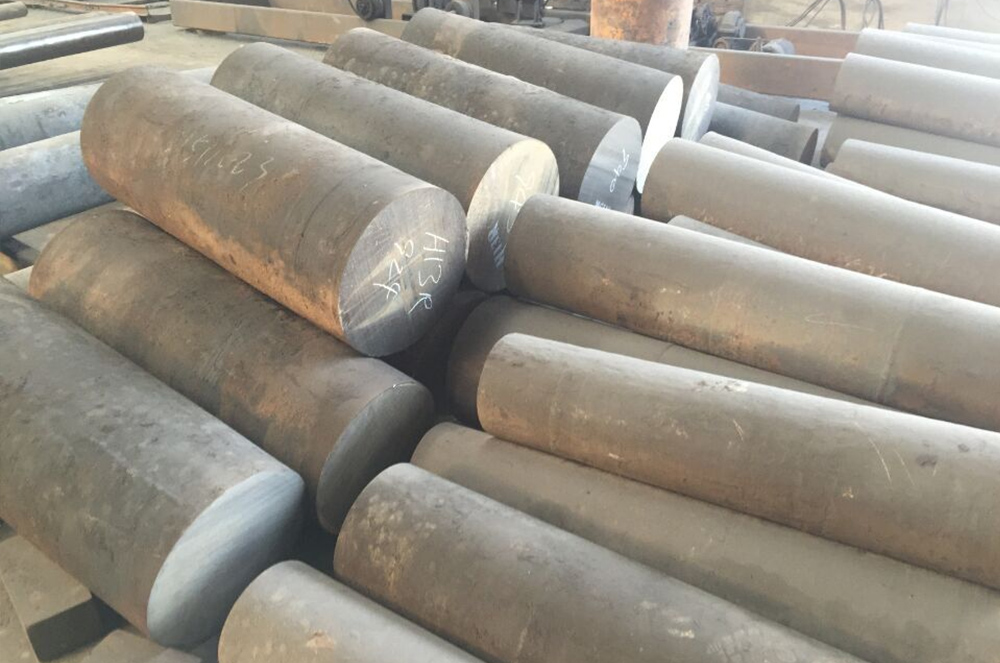Electroslag remelting (ESR) is widely used to produce high-quality steel ingots with excellent properties such as enhanced cleanliness, homogeneity, and superior mechanical characteristics. However, during this process, surface defects like pits (dimples) can develop on the steel ingots, potentially compromising their quality. To ensure high performance, it is essential to identify and understand the primary causes of these pits.
Table: Common Causes of Pit Formation on Electroslag Steel Ingots
| Cause | Description | Effects on Steel Ingots |
|---|---|---|
| Slag Layer Inconsistencies | Uneven or improperly composed slag layer can lead to inconsistent heat transfer and cooling. | Localized overheating or cooling creates surface defects. |
| Molten Steel Cleanliness | Presence of impurities like oxides and sulfides in the molten steel that are not adequately removed. | Trapped inclusions lead to pits or surface irregularities. |
| Cooling Rate Variations | Cooling that is either too rapid or too slow, causing uneven solidification. | Too fast: cracks and pits; too slow: rough surface texture. |
| Molten Pool Instability | Fluctuations in the temperature or surface stability of the molten pool during remelting. | Irregular solidification leads to dimpled surfaces. |
| Gas Entrapment | Dissolved gases like hydrogen or oxygen remain in the molten steel and escape during solidification. | Escaping gases leave pits or cavities on the ingot surface. |
| Mold or Operational Factors | Rough or improperly cleaned molds or external vibrations during processing. | Marks and pits form due to rough mold surfaces or vibrations. |
Detailed Analysis of Pit Formation Causes
1. Slag Layer Inconsistencies
The slag layer in electroslag remelting plays a critical role in controlling heat transfer and refining the molten steel. If the slag layer is uneven in thickness or improperly composed, the heat transfer becomes inconsistent, leading to irregular cooling rates. This results in localized overheating or cooling, which in turn creates surface defects like pits. Maintaining a uniform slag layer and optimizing its composition can significantly reduce the risk of pit formation.
2. Molten Steel Cleanliness
During the ESR process, the molten steel must be free from impurities such as oxides, sulfides, and non-metallic inclusions. If the cleanliness of the molten steel is insufficient, these inclusions may get trapped in the steel during solidification. As the steel cools, these inclusions cause surface imperfections, leading to pits or irregular shapes on the ingot’s surface. Improving the refining process and enhancing slag composition can help to remove these inclusions effectively.
3. Cooling Rate Variations
The cooling rate during the ESR process has a direct impact on the steel ingot’s surface quality. If the cooling rate is too fast, surface cracks or stress-related defects like pits can form. Conversely, if the cooling is too slow, the steel may develop a rough texture with increased chances of pit formation. Optimal cooling rates should be established to ensure a smooth surface finish and to prevent any stress-related defects.

4. Molten Pool Instability
The stability of the molten pool during electroslag remelting is critical for uniform solidification. Any temperature fluctuations or instability in the liquid pool can cause the metal to solidify in an irregular pattern, resulting in dimples or pits on the steel ingot surface. Consistent temperature control and stable operation of the molten pool are essential to minimize this issue.
5. Gas Entrapment
Gas entrapment occurs when gases such as oxygen, nitrogen, or hydrogen are not properly eliminated from the molten steel. As the steel cools, these trapped gases escape, creating small cavities or pits on the surface of the ingot. Proper degassing techniques should be used to minimize the amount of dissolved gas in the molten steel, ensuring fewer surface defects.
6. Mold or Operational Factors
The condition of the mold used in the remelting process also affects the surface quality of the steel ingot. If the mold is rough, damaged, or not properly cleaned, it can leave impressions on the surface, resulting in pits or surface defects. Additionally, vibrations or external disturbances during the remelting process can affect the molten metal’s uniformity, causing surface imperfections. Ensuring a smooth mold surface and stable operational conditions are key to reducing pit formation.
Pit formation on electroslag steel ingots is a complex issue caused by a combination of factors such as slag layer inconsistencies, insufficient steel cleanliness, cooling rate variations, molten pool instability, gas entrapment, and operational challenges. By addressing these causes, manufacturers can significantly reduce surface defects and improve the overall quality of the steel ingots.
For better results, it is crucial to optimize the slag composition, ensure molten steel cleanliness, control the cooling rate, stabilize the molten pool, and maintain high standards of mold quality and operational practices. These actions will help in producing smoother and defect-free electroslag steel ingots, which are essential for high-performance applications in industries like automotive, aerospace, and heavy machinery.
